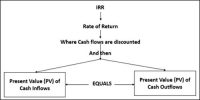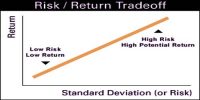Opportunity cost is the potential benefit that is given up when one alternative is selected over another opportunity cost are not recorded in the organization general ledger because did not represent actual outlay. It refers to what you have to give up buying what you want in terms of other goods or services.
Role of opportunity cost in discounted cash flow (DCF) analysis:
The opportunity cost concept plays an important in discounted cash flow (DCF) analysis because investing in one alternative the firm has forgone the opportunity to invest the fund in any other alternatives. This analysis tells investors how much a company is worth today based on all of the cash that a company could make available to investors in the future. It is a valuation method used to estimate the attractiveness of an investment opportunity. The discounted rate applies in DCF analysis is affected by an opportunity cost affects project selection and selecting a discounting rate. DCF analysis finds the present value of expected future cash flows using a discount rate. It requires calculation of a company’s free cash flows (FCF) in addition to the net present value (NPV) of these FCFs. While deciding whether to take up or not to take up the project, as it shows the current return from the resource, shall be considered for decision making while calculating the cash flows and NPV for a project.















